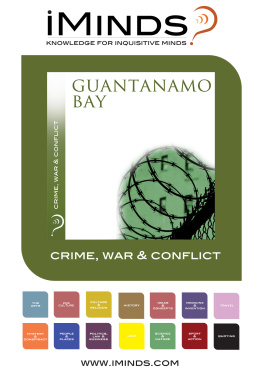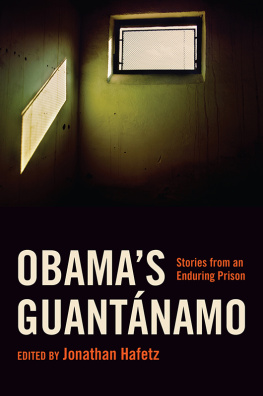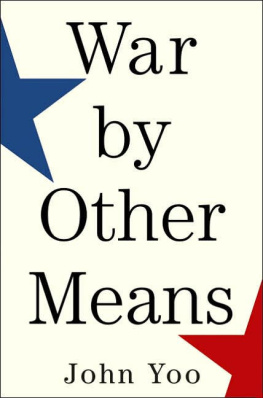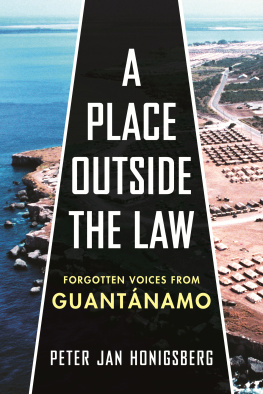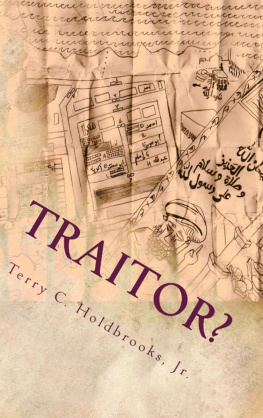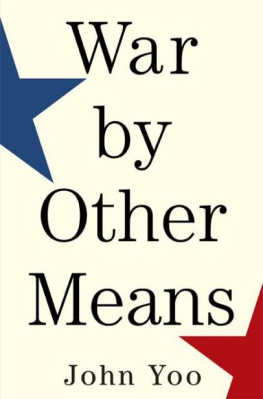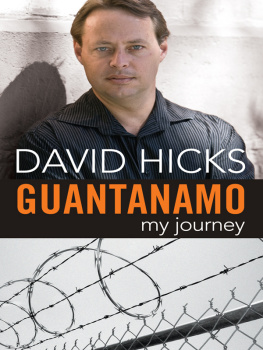THE TERROR COURTS
The Terror Courts
Rough Justice at Guantanamo Bay

JESS BRAVIN

Copyright 2013 by Jess Bravin.
All rights reserved.
This book may not be reproduced, in whole or in part, including illustrations, in any form (beyond that copying permitted by Sections 107 and 108 of the US Copyright Law and except by reviewers for the public press), without written permission from the publishers.
Yale University Press books may be purchased in quantity for educational, business, or promotional use. For information, please e-mail sales.press@ yale.edu (US office) or sales@yaleup.co.uk (UK office).
Designed by Sonia Shannon.
Set in Minion type by Keystone Typesetting, Inc.
Printed in the United States of America.
Library of Congress Cataloging-in-Publication Data Bravin, Jess.
The terror courts : rough justice at Guantanamo Bay / Jess Bravin. pages cm
Includes bibliographical references and index.
ISBN 978-0-300-18920-9 (clothbound)
1. War crimes trialsUnited States. 2. Guantanamo Bay Detention Camp.
3. Military courtsCubaGuantanamo Bay Naval Base. I. Title.
KF7661.B73 2013
345.73023170269dc23
2012034913
A catalogue record for this book is available from the British Library.
This paper meets the requirements of ANSI/NISO Z39.481992 (Permanence of Paper).
10 9 8 7 6 5 4 3 2 1
To Anne Marie
Shall the Souldier and Justice Sit on one Bench, the Trumpet will not let the Cryer speak in Westminster-Hall.
Sir Edward Coke, 1628
Contents
Prologue
NOVEMBER 24, 2001. AROUND NOON .
Checkpoints were common as potholes on the roads of Afghanistan. Salim Ahmed Salim Hamdan, driving north on Highway 4 in a Toyota hatchback, was not surprised to be stopped by a group of armed men as he approached the fortified town of Takht-e Pol.
Afghanistan was at war. It had been at war for decades. On October 7, less than a month after terrorist attacks obliterated the Twin Towers in New York and destroyed part of the Pentagon in Washington, the United States had become the latest entrant in the Afghan wars. American air strikes and Special Forces backed a loose confederation of militias hostile to the ruling Taliban movement, but here, in Kandahar province, the Taliban still dominated. The city of Kandahar, according to legend founded by Alexander the Great, was the home of Mullah Mohammed Omar, a half-blind cleric who led the Taliban with the aid of Pakistani intelligence. Highway 4 ran southeast from Kandahar to the frontier, into the Pakistani province of Baluchistan and its capital, Quetta. In recent decades, Quetta had been transformed by an influx of Afghan refugees and the elements that inevitably accompanied them: arms dealers, drug smugglers, factional cadre, intelligence agents. The city, which sat just outside the war zone, was a haven for various parties with an interest in Afghanistan. As the American-led campaign turned toward Kandahar, more Afghans would set out along Highway 4 seeking safety in Quetta.
But Hamdan was headed the other way: to Kandahar. And to his apparent surprise, the fighters at the checkpoint werent Taliban but part of the enemy Pashtun militia. Hours before, American air strikes had blasted out Takht-e Pols Taliban defenders, allowing fighters from the eight-hundred-man militia under the warlord Gul Sharzai to enter the town without firing a shot.
Sharzais men had set up highway roadblocks north and south of Takht-e Pol, which would serve as a staging ground for a coming assault on Kandahar, after another American-paid Pashtun militiathis one headed by Hamid Karzaiarrived from the north. Traffic had been slight. Earlier, a white van had tried to blow past the checkpoint, prompting a shootout that left two Egyptian occupants dead and a third man captured, a Moroccan whose name would turn out to be Said Boujaadia.
Hamdan was not so bold. He tried to flee, but the Afghans nabbed him and immediately identified him as an Arab. He was being dragged away to an uncertain fate when the American officer managing the Sharzai operation, Major Hank Smith, showed up to see what the shooting was about. The Pashtuns pointed to two SA-7 Grail surface-to-air missiles in battered, olive-drab carrying tubes. They said the missiles had been taken from the Arabs car.
With barely a dozen Americans on handsoldiers and CIASmith hardly was equipped to deal with enemy prisoners of war. Still, Afghan militias were even less inclined to take prisoners, and summary execution of captured enemies was not unknown as a local tradition. Smith had his American soldiers take Hamdan and Boujaadia, hooded and bound, to a nearby shack.
A search of the Toyota turned up two passports, Yemen Airways tickets for Hamdan and a woman named Fatima, a handheld radio, brevity codesa form of radio shorthandand a folder with newspaper and magazine articles about al Qaeda. Plenty of cash was found$1,900, plus about $260 in Pakistani rupees. There was a passport photo envelope from Razis Portrait Inn Studio and Express Lab, located in Unit 44 of the Shalimar Shopping Center in Karachi, Pakistan. There were five photos of a baby girl. And there were letters. One, handwritten in Arabic on a page ripped from a small spiral-bound notebook, was addressed to Brother Saqr.
I hope you and all the brothers with you are well, it read. If possible, please send me 25 to 30 original Russian Pikkaa type of machine gunbelts. Likewise, if you can find Pikka magazines. Most of the Pikkas we have do not have them and we are in urgent need of them. Even Grenavanother Soviet-made weaponmagazines will work. We cut them off and adapt them for the Pikka in the workshop. Please do whatever you can.
Your brother, Khallad.
P.S. Can you find three military compasses for us? They said there are a lot of them in Kabul.
Major Smith looked at the SA-7s, now sitting on the tailgate of a blue pickup. By themselves, they were inoperable. No launchers or firing mechanisms had been found.
The Taliban had no air force. The only planes in the sky, the only possible target for a surface-to-air missilethe sort of weapon that in the 1980s, when supplied by Washington to the mujahideen, had proved so devastating to the Soviet militarywas the American-led coalition air forces. After photographing the missiles to include in a future report, Smith ordered them destroyed. Not so Hamdans car. He affixed an orange insignia to the hood, the signal to coalition air forces that the vehicle was friendly, and gave the car to one of his local interpreters. Smith considered it a form of recycling.
Small and swarthy, Hamdan sat on the dirt floor of a mud hut, his hands bound before him in flexicuffs. With a video camera running, a masked US Army interrogator questioned him in Arabic. An armed guard stood behind the prisoner, remaining silent as the interrogator struggled to make himself understood through his heavy American accent.
Hamdan spoke rapidly, his eyes bright, his smile and occasional nervous laugh suggesting he knew his number was up. He said he had come to Afghanistan as a relief worker for al Wafa, an Islamic charity. But with the recent fighting, he had borrowed a car to take his wife and daughter to safety in Pakistan. The car wasnt hishe had borrowed it from somebody named Abu Yasserand neither were most of the items found in it. Sure, he knew there were SA-7s in the trunk, he said, but they must have belonged to Abu Yasser. Yes, he had heard of al Qaeda, but he knew little about it. I heard that they train people who come to Afghanistan for training, he said. Perhaps he didnt expect ever to leave that hut. I am not lying to you, he said.
Next page

